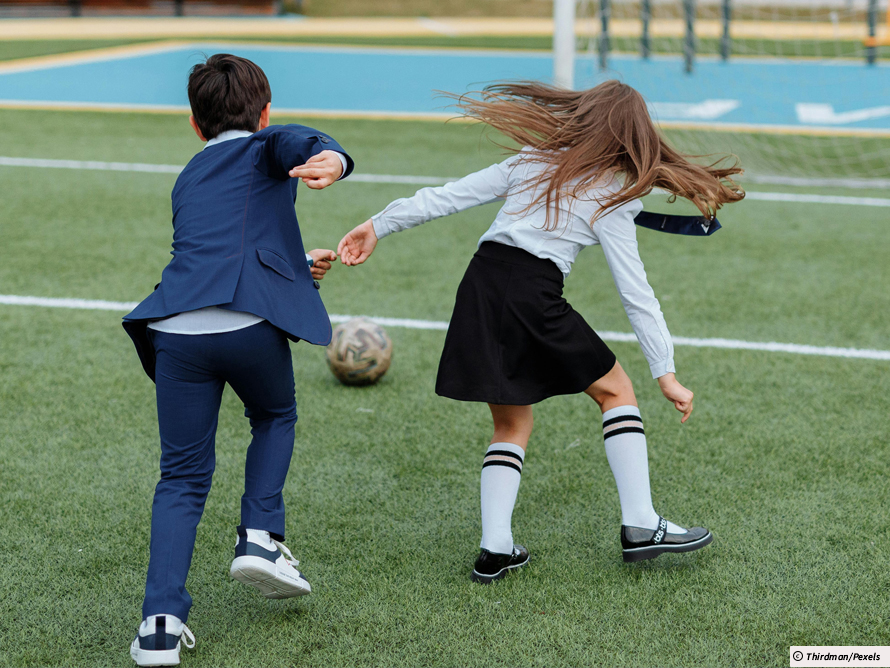Boys and girls should be encouraged to play sports together when physical differences are minimal and the focus is on enjoyment, development, and teamwork, says Edward, 14, from Haberdashers’ Monmouth.
At first glance, it may seem that it doesn’t matter if girls and boys play against each other in sport. At a young age, they are often similar in strength and speed. However, there is something else to consider; from early childhood, boys are often encouraged to take sports seriously and adopt a competitive mindset. In contrast, girls are sometimes steered more toward participation for enjoyment rather than competition.
This difference in attitude can be seen even in the way mistakes are handled in gendered teams. As my English teacher once observed about his children’s experiences in sport: “When my daughter misses a shot, her teammates come over and say it’s alright and you’ll score next time, but when my son misses, there’s heads in hands and complaining.” This anecdote highlights the contrasting team dynamics and social expectations boys and girls often face in sports settings.
Despite these differences, research shows that co-ed sports can offer significant benefits, especially at younger ages. A 2022 study found that mixed-gender sports promote cooperation, mutual respect, and better communication skills. At the primary school level, the physical differences between boys and girls are minimal. The American Academy of Paediatrics reports that before puberty, boys and girls have similar levels of strength and endurance, supporting the idea of mixed teams during the early years.
However, after puberty, physiological differences become more apparent. Boys typically develop greater muscle mass and higher levels of testosterone, resulting in increased strength and speed. This can lead to imbalance in certain competitive sports. A 2020 report from the National Institutes of Health noted that boys aged 14–16 have an average of 10–15% more lean body mass and significantly higher aerobic capacity than girls of the same age. In contact sports, these differences can raise concerns around safety and fairness.
Confidence and participation are also key issues. Girls are more likely to drop out of sports during adolescence, often citing feelings of discomfort or lack of belonging. The Women in Sport charity found that by age 14, only 10% of girls meet the recommended physical activity levels, compared to 20% of boys. Advocates of gender-separated teams argue that these spaces help foster confidence by allowing girls to compete without being overshadowed by physically stronger peers.
Proponents of mixed-gender sports believe integration can promote long-term gender equality. Co-ed teams encourage boys and girls to collaborate from an early age and challenge stereotypes about gender and athletic ability. Some countries are even piloting mixed-gender youth leagues up to the age of 16, particularly in less contact-heavy sports such as volleyball, to support inclusive participation.
Ultimately, boys and girls should be encouraged to play sports together in their early years, when physical differences are minimal and the focus is on enjoyment, development, and teamwork. As they grow older and the level of competition rises, separate teams may provide a fairer and safer environment, allowing both genders to thrive.
Interested in submitting your own Student Voices article or video? Find out more here.


